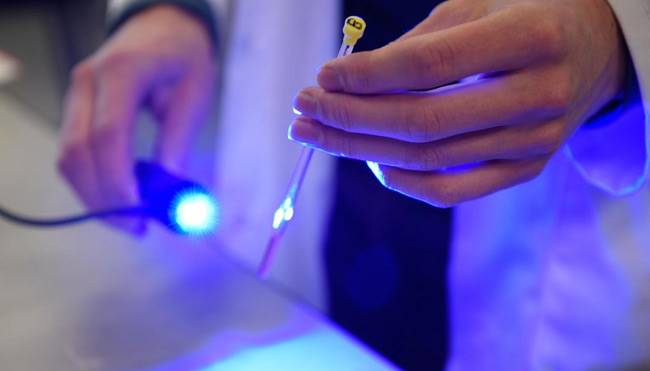
An artificial mimic of a key light-sensitive molecule has been made by scientists at the University of Bristol. The work, published in Science, could lead to new ways of building light-sensitive artificial cells.
Professor Jonathan Clayden and colleagues in Bristol’s School of Chemistry, along with collaborators at the Universities of Manchester and Hull, created an artificial mimic of rhodopsin, a protein that resides in cell membranes in the retina. The absorption of light by rhodopsin is the first step in the biochemistry of vision.
Using molecular design features taken from some antibiotic molecules that also bind to membranes, the researchers were able to design and build a molecule that finds its way into a membrane and switches between different shapes in response to light of specific wavelengths.
The work revealed that unlike many natural molecules, these artificial structures have similar properties in solution and in membranes, making the prediction of their behaviour much more reliable.
Professor Clayden said: “This is the first time an artificial mimic of rhodopsin has been created: a discovery that could lead to new ways of building light-sensitive artificial cells and could allow scientists to bypass the usual communication mechanisms used by cells.”